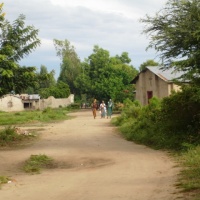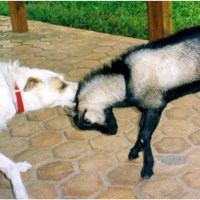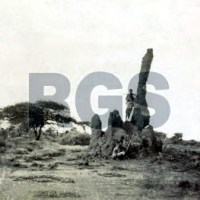Those of you who garden organically and who use animal manure – and those of you who eat veggies that are harvested close to streams – this information from Australia is important. We use goat manure here, and the workers are constantly infected and I buy them Albendazole for treatment. For farmers who only work in the soil, washing constantly is simply not an option.
Source – Dr Steve Love, e-colleague in Australia:
Trichostrongylus infection in travellers visiting a New Zealand sheep farm
Wall CW and others (2010). An unusual case of hypereosinophilia and abdominal pain: an outbreak of Trichostrongylus imported from New Zealand. J Travel Med 2011; 18: 59-60.
A colleague from NZ (D Leathwick) pointed me to this interesting paper.
A 62 year old British woman spent a week on a sheep farm in NZ. Shortly afterwards she felt dizzy and nauseated, followed by abdominal pain, bloating, diarrhoea and weight loss.
Haematology ordered by her GP (Cornwall, UK) showed eosinophilia. Clinical and other investigations (at Royal Cornwall Hospital) revealed nothing of note, apart from increasing eosinophilia.
Later the woman got an email from two friends who had been on the same trip, developed similar symptoms, and had them investigated (in New Zealand). (That’s one for the Kiwis :-).
They were found to have eosinophilia, and Trichostrongylus sp eggs in faecal samples.
The email exchange resulted in further investigations, at the Hospital for Tropical Diseases, on the woman back in the UK. Trichostrongylus sp eggs were found in her faeces also. Albendazole 400 mg twice daily for 3 days led to full recovery in 6 weeks and almost complete resolution of her peripheral eosinophilia.
(I wonder if our medical colleagues considered the resistance status of the isolate? But, I guess this sort of treatment regimen with albendazole could be efficacious even against benzimidazole-resistant Trichostrongylus).
The source of the infection was traced by veterinarian Dr Chris Morley (Ministry of Agriculture, NZ) to the use of sheep manure as an organic fertiliser on a salad garden.
(Which prompts a side note: there have been humans cases in Australia of fasciolosis – e.g. one case I know of just east of Walcha, in NSW, associated with eating water cress (in salad presumably), the source presumed to be wild water cress growing alongside a waterway on a liver fluke-infected property. It pays to be circumspect in such cases, unless you habitually use salad dressing based on triclabendazole 😉 . My recollection is that Dr Joe Boray was involved in this and/or similar (human) cases and prevailed upon the health authorities to treat the patients with triclabendazole, instead of a somewhat less suitable anthelmintic. It helps that Joe was involved in the development of this drug in his Ciba-Geigy days).
Trichostrongylusspp of course are common in herbivores including sheep in Australia, New Zealand and elsewhere. Humans usually are infected through exposure to animal faeces, via contaminated food or water, and most commonly in Asia and the Middle East. As well as this NZ case, several cases of human infection have been reported in Australia. One report from Sydney involved manure from a pet goat being used to fertilise an organic garden. Wall and colleagues also state that five human cases have been reported from rural Australia with a similar transmission method proposed.
Trichostrongylus was listed in an early draft of the DII Zoonoses Primefact, but later deleted. Perhaps it should be reinstated. http://www.dpi.nsw.gov.au/agriculture/livestock/health/humans/zoonoses
While we are speaking of zoonoses, I see Therese Wright has written a Primefact (No. 1069) on Bats and Health Risks. http://www.dpi.nsw.gov.au/agriculture/livestock/health/humans/bats




























We also use animal manure to fertiliser crops, mainly carabao & cow dung but also goat manure. I have not heard of any infection. But farmers here (Philippines) use dry manure.
LikeLike
Wet of all livestock. Dried will tend to kill most/many. I encourage the farmers to at least rinse well their hands after working with the manure. Helps to reduce the risk. And actually, having worms is not such a terrible thing! It’s just a good idea to monitor symptoms and so forth.
LikeLike
Ah! That spells the difference. While doing a perception survey (unrelated to this) amongst farmers sometime back, I asked them if they ever used fresh/wet manure and they were appalled with the idea. They said it’s never done. Plants will die (I don’t think they even tried, as this use of dry manure is an ancient practice) and that fresh manure is toxic.
Hmmm… good to compare notes.
LikeLike
Cow manure is too ‘hot’ to use directly on crops and must be aged a bit. Goat manure is ok to apply directly. Imagine sheep is the same. Horse manue can also be applied directly and it is very good. Especially for roses! Yes, good to compare.
LikeLike